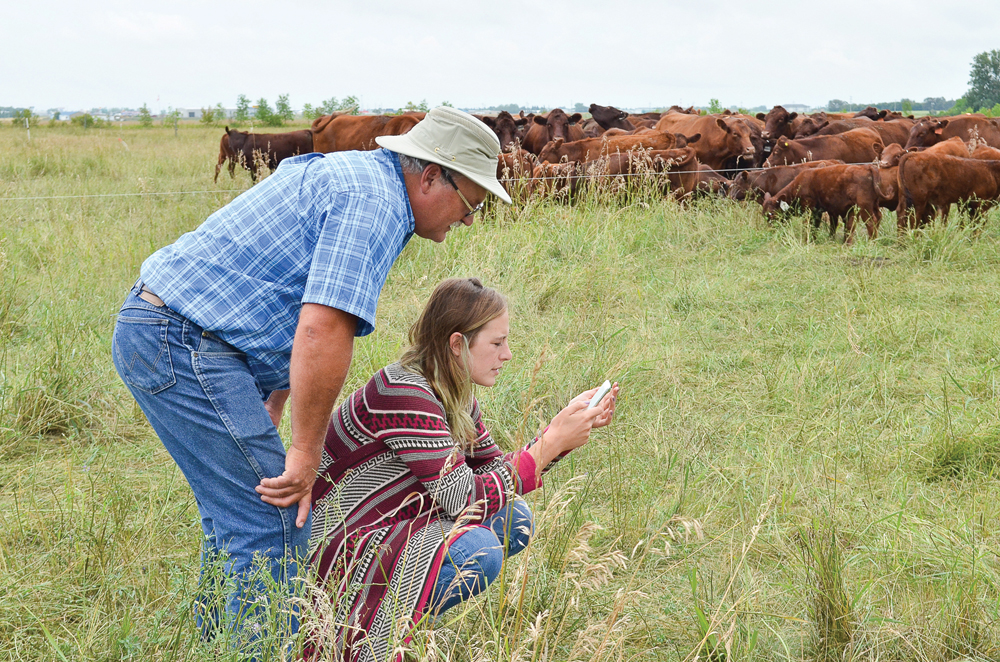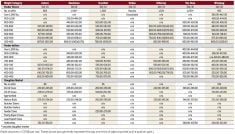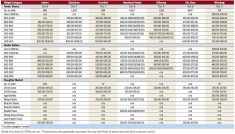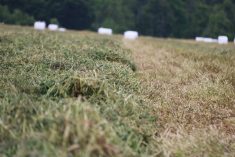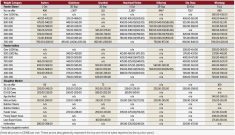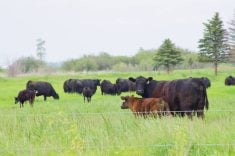A three-year mob grazing experiment near Brandon is over, but the co-operating producer says he has no intention of going back to his old system.
In fact, Brian Harper says he’s already planning how to build on the system and take even more advantage of the gains.
“Next year, I plan to put even more beef over there,” he said. “We leave more grass behind now than we ever grew 10 years ago, so there’s definitely room there for more animals.”
Better results
Read Also

Beekeepers want financial protection against tropi mite
What happens to beekeepers if the deadly tropi mite reaches Canada? Discover why farmers want robust compensation to protect pollination.
Over three years ago, Harper was approached by Michael Thiele, Ducks Unlimited grazing clubs co-ordinator. Thiele was looking for a grasslands project, spurred by funding from the Commission for Environmental Co-operation, and, wanting to explore mob grazing’s purported soil health and production benefits, pitched the idea of measuring the practice’s actual impact in the field.
Harper agreed to use his land and herd for the project. In 2014, Harper abandoned his usual eight-acre paddocks rotated every four days, a system he had used since 2003, in favour of half-acre paddocks, moved twice daily.
“I’d been to different producers who were doing high stock density and I just saw the better results and the improvement in the soil health and it just kind of morphed from there,” Harper said. “I knew I could do better than I was doing.”
Within three years, the parcel of land went from running out of grass after 120 days of grazing to moving cattle off the land after 155 days with hay to spare.
Harper immediately saw an increase in beef production. The first year, the pasture’s population jumped from 32 cow-calf pairs to 37 pairs and eight heifers, and Harper took off almost 4,000 pounds more beef than the previous year. By 2016, Harper had moved 44 pairs and 12 heifers into the same space, more than doubled his forage production and took off 6,970 more pounds of beef than he did in 2013.
Getting better
Despite the heavier use, however, soil tests implied the land was under less strain.
The pasture averaged 26.6 (or “low”) on the first Solvita carbon tests in 2014 despite being rotationally grazed for the previous 10 years. By 2017, however, Solvita results had risen to 71.7, or “high” carbon. Organic matter results had, likewise, increased from an average 3.6 to 4.3 per cent.
Total organic carbon had decreased from 271.8 to 205.8 parts per million on average, but those lower results may be due to higher temperatures and more microbe activity leading to more carbon consumption. Tests showed that living microbial biomass change from 2014-17 ranged from a 29 per cent decrease (the only negative result) to a 347 per cent increase.
The experiment found increases in both nitrogen and phosphorus mineralization. In 2014, soil tests averaged 3.9 parts per million of nitrogen released. By 2017, that was up to 11.3 parts per million. Phosphorus likewise jumped an average three parts per million from three to six.

Nitrogen-fixing rhizobia micro-organisms were also shown to be on the rise. In 2014, tests showed a “total absence” of the bacteria, but by 2017 all tests showed evidence of rhizobia. The balance of fungi to bacteria also rose from a 0.172 ratio to almost 1.38.
When all those numbers are added up, the result is higher forage production and dramatically higher stock density rates.
Beginning gradually, over a three-year period, the stock density was dramatically increased. It rose from a starting point ranging from 5,000 to 7,000 pounds an acre per day to as high as 86,000 pounds per acre per day. Most producers would expect to see changes to their pasture with those numbers — but they might not expect the changes to be as positive as they have been.
“We’ve increased forage production, we’re producing more beef per acre, Brian’s making more money, we’ve pumped carbon into the soil, the biology’s functioning better and at balance, we’ve lowered the pH and there’s more wildlife,” Thiele said, summing up the major changes.
The association counted five times as many birds and twice as many bird species by the end of the experiment.
Thiele noted that pH is still higher than ideal (ranging from 7.1 to 7.7), despite lower measurements.
Early concerns
Harper may have plans to intensify his already intensified system, but he was initially anxious about increasing stock density so dramatically, worried he might overgraze each paddock.
It is a common concern, and one that Thiele says he fights regularly when introducing high stock density grazing to producers.
“It was all sort of figuring out how to do all this,” Thiele said. “How big should the paddocks be? How many cows? How long a rotation? — all this kind of details stuff. The basic principals, like I say, are very simple, just higher stock density, short grazing period, long recovery. You’re just trying to mimic the way this grassland has been managed by nature for the last 10,000 years.”
Mob grazing has become an increasingly popular topic among forage workshops and soil health initiatives both in and outside Manitoba.
Proponents argue that the system mimics the large herds of grazing animals, such as bison, which would move into an area, graze it intensely, and then leave for long periods of time. Studies have linked the practice to deeper root systems, which in turn break up compaction and increase organic matter in soils.
Industry groups have latched on to these findings as conversations on global warming and carbon tax continue. Both the forage and grassland association and Manitoba Beef Producers have targeted its implications for carbon sequestration, the removal of carbon dioxide from the atmosphere into the soil through plant growth.
What’s next?
The three-year results are not the last to be taken off Harper’s land, although they mark the end of the funded experiment, Thiele said.
The Manitoba Forage and Grassland Association plans to test soils again in another three years to mark long-term soil changes under high stock density grazing.
Those results will be better able to compare biological changes, Thiele said. This year’s tests included Quorum Laboratories, a U.S.-based lab which uses DNA sequencing to track microbes and the interaction between biology and chemistry in the soil.
This year’s results will be a benchmark against future Quorum Laboratories tests.
Harper advised those thinking about high stock density grazing to start slow, halving their existing paddocks or pastures if they are concerned about overloading land and adjusting from there.
“I know a lot of people give up,” Harper said. “They try it for one year and say it didn’t work. You have to have patience. You can see on our place over there, it’s only been three years and the difference we’ve made and the increase both in forage and in beef production is well worth doing it.
“There’s also a learning curve for both the producer and the cattle,” he added. “Bear with it and observe.”
Harper has invited producers to contact him with any questions on high stock density grazing and can be reached by email at [email protected].


